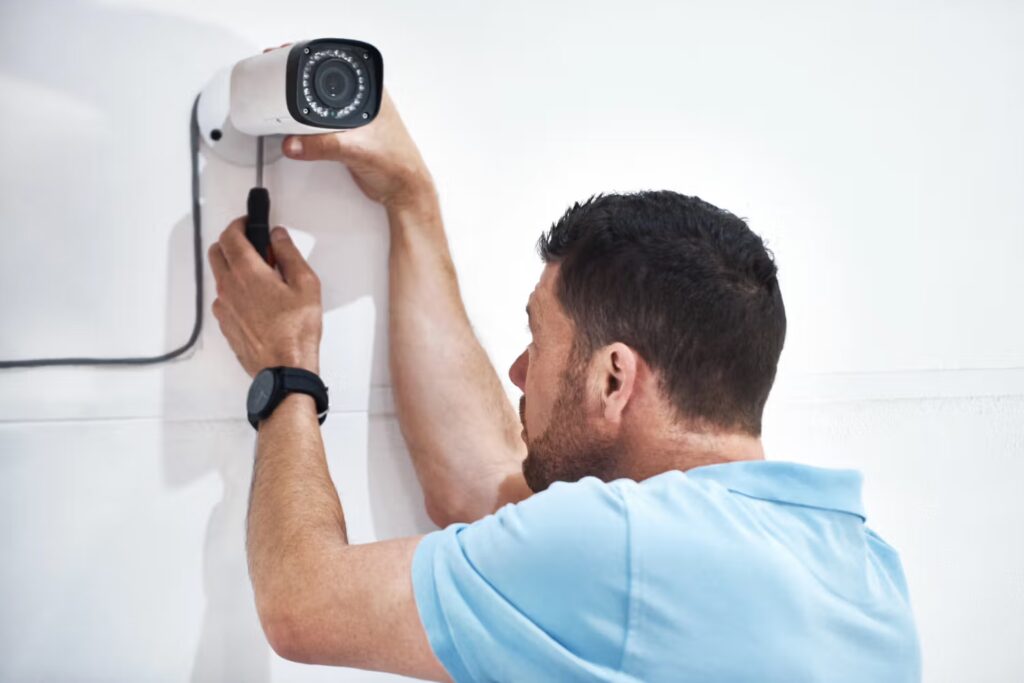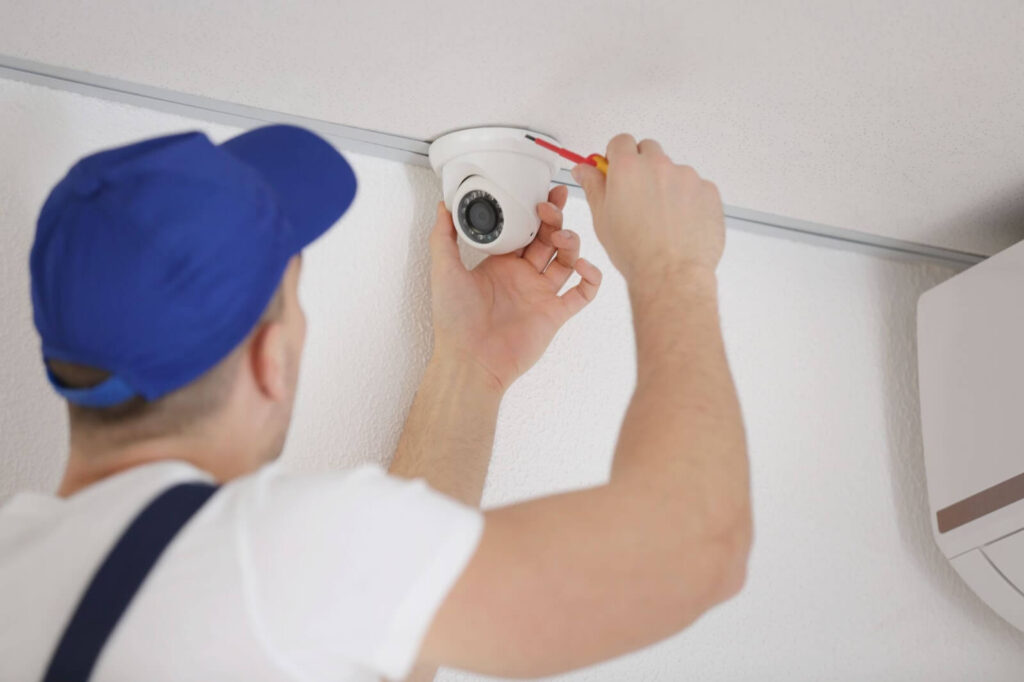In an era where home security is paramount, installing security cameras has become a necessity for many Australian homeowners. With increasing concerns about safety and property protection, understanding the best practices for installing these systems can significantly enhance security measures. This article offers expert tips tailored specifically for the Australian context, ensuring that your home remains safe and secure.
Understanding the Basics of Security Cameras
Types of Security Cameras
Before diving into installation, it is crucial to understand the various types of home security camera installation available. The most common options include wired, wireless, indoor, and outdoor cameras. Wired cameras tend to offer more stable connectivity and are less prone to interference, while wireless cameras provide flexibility in placement and installation. Each type has its own set of advantages and disadvantages, making it important to evaluate your specific requirements before making a decision.
Outdoor cameras are designed to withstand the elements, featuring weatherproof casings and night vision capabilities. In contrast, indoor cameras are typically used for monitoring the interior of the home, providing peace of mind when away. Some outdoor models also include features like pan-and-tilt functionality, allowing for a broader range of surveillance, while indoor cameras may come with two-way audio, enabling communication with family members or pets. Assessing your specific needs will help determine the best type of camera for your situation.
Key Features to Look For
When selecting security cameras, consider features such as resolution, field of view, and motion detection capabilities. High-definition cameras (1080p or higher) offer clearer images, which can be crucial for identifying intruders or capturing important details. It is also worth noting that some cameras now boast 4K resolution, providing even sharper images that can be beneficial in critical situations.
Additionally, a wide field of view allows for more area coverage, reducing the number of cameras needed. Motion detection alerts can notify homeowners of any unusual activity, providing an extra layer of security. Many modern cameras also come equipped with smartphone compatibility, enabling real-time monitoring from anywhere. Some advanced models even incorporate artificial intelligence to differentiate between people, pets, and vehicles, further enhancing the effectiveness of your surveillance system. Furthermore, cloud storage options can be invaluable for keeping footage safe and accessible, ensuring that you can review past events whenever necessary.
Planning Your Camera Placement
Identifying Vulnerable Areas
Effective camera placement is essential for maximising security. Begin by identifying vulnerable areas around your property, such as entry points, driveways, and backyards. Front doors and windows are prime targets for intruders, so ensuring these areas are well-monitored is vital.
Consider placing cameras at a height that makes them difficult to tamper with, ideally above head height. This not only deters potential intruders but also captures clearer images of faces and activities. Additionally, ensure that the cameras cover any blind spots around your property, such as corners or hidden areas.
Taking Advantage of Lighting
Proper lighting can significantly enhance the effectiveness of security cameras. Installing cameras in well-lit areas can improve image quality, particularly at night. Consider using motion-activated lights to illuminate dark areas when movement is detected, which can deter potential intruders.
For outdoor cameras, ensure they have infrared night vision capabilities, allowing them to capture clear images even in low-light conditions. This feature is particularly important in Australia, where wildlife and environmental factors can affect visibility at night.
Installation Process
Gathering Necessary Tools and Equipment
Before commencing installation, gather all necessary tools and equipment. Common tools include a drill, screwdriver, level, and measuring tape. Additionally, ensure you have the appropriate cables and connectors, especially if installing wired cameras.
If opting for wireless cameras, ensure that your Wi-Fi signal is strong in the areas where the cameras will be placed. It may be beneficial to invest in a Wi-Fi extender to enhance connectivity, particularly in larger properties.
Following Manufacturer Instructions
Each security camera system will come with specific installation instructions provided by the manufacturer. It is crucial to follow these guidelines closely to ensure proper setup and functionality. This includes mounting the cameras securely and connecting them to the power supply or Wi-Fi network as required.
For those unfamiliar with electrical work, it may be advisable to hire a professional to assist with the installation, particularly for wired systems. This not only ensures safety but also guarantees that the cameras are installed correctly for optimal performance.
Integrating with Home Security Systems
Smart Home Compatibility
Incorporating security cameras into an existing smart home system can enhance overall security. Many modern cameras are designed to integrate seamlessly with smart home devices, allowing for centralised control through a single app or platform.

This integration can enable features such as automated alerts, remote monitoring, and video storage options. Homeowners can receive notifications directly to their smartphones, providing real-time updates on any suspicious activity detected by the cameras.
Cloud Storage vs. Local Storage
When setting up security cameras, consider how video footage will be stored. Cloud storage offers the advantage of remote access to footage, ensuring that even if the camera is tampered with, the recordings are safe. However, this often comes with a subscription fee.
On the other hand, local storage options, such as SD cards or Network Video Recorders (NVRs), can be more cost-effective in the long run. However, they may require more management and can be vulnerable to theft if not adequately secured. Weighing the pros and cons of each option will help determine the best storage solution for your needs.
Maintaining Your Security Camera System
Regular Checks and Updates
Once the cameras are installed, regular maintenance is essential to ensure they function optimally. This includes checking camera angles, cleaning lenses, and ensuring that all connections are secure. Regularly reviewing footage can also help identify any potential issues or blind spots that may need addressing.
Additionally, keeping the camera’s firmware updated is crucial for security and performance. Manufacturers often release updates that enhance functionality and patch any vulnerabilities. Setting reminders to check for updates every few months can help maintain the system’s integrity.
Responding to Alerts
Security cameras are most effective when homeowners actively monitor and respond to alerts. Setting up notifications for motion detection or unusual activity can provide peace of mind, but it is essential to have a plan in place for responding to these alerts.
Consider what steps to take if an alert is triggered. This may include contacting local authorities or simply reviewing the footage to determine if the alert was a false alarm. Having a clear response plan can ensure that homeowners are prepared for any situation that may arise.
Legal Considerations in Australia
Understanding Privacy Laws
When installing security cameras, it is crucial to be aware of the legal implications surrounding privacy in Australia. The Privacy Act 1988 governs the use of surveillance devices, and it is essential to ensure compliance with these regulations.
Generally, it is legal to install cameras on private property as long as they are not directed towards areas where individuals have a reasonable expectation of privacy, such as bathrooms or bedrooms. Additionally, informing visitors about the presence of cameras can help avoid any potential legal issues.
Notification Requirements
In some states and territories, there may be specific requirements for notifying individuals about the presence of surveillance cameras. This can include signage indicating that the area is under video surveillance. Familiarising yourself with local laws can help ensure compliance and avoid potential fines.

Conclusion
Installing security cameras is a proactive step towards enhancing home security in Australia. By understanding the types of cameras available, planning effective placement, and following best practices for installation and maintenance, homeowners can create a robust security system.
Moreover, being aware of legal considerations ensures that the installation process remains compliant with Australian laws. With the right approach, security cameras can provide invaluable peace of mind, protecting both property and loved ones.
Investing time and effort into the installation process will pay dividends in the long run, creating a safer environment for all. Whether opting for a DIY approach or hiring professionals, the key is to remain informed and proactive in safeguarding your home.
See Also: What to expect during a professional home security installation.






